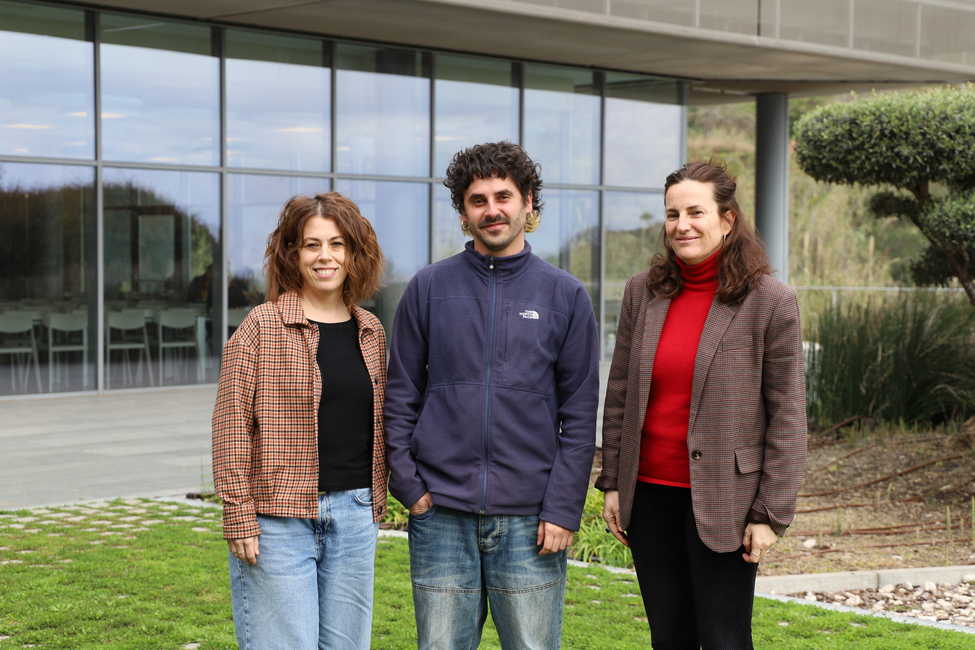Common anticancer drugs may offer new hope to PTEN Hamartoma Tumour Syndrome patients
A new study on the genetic causes of the PTEN Hamartoma Tumour Syndrome (PHTS) has found that inhibitors of the PI3ka pathway, commonly used as anticancer drugs, are also effective against this disease, reducing the extent of vascular malformations and lesion-associated pain in animal models. The research, led by Dr. Sandra Castillo, Dr. Eulàlia Baslega and Dr. Mariona Graupera, from the Institut de Recerca Sant Joan de Déu (IRSJD), Hospital Sant Joan de Déu, and the Josep Carreras Leukaemia Research Institute, respectively, suggests the repurposing of these drugs may offer a new hope for PHTS patients, especially at younger ages. The research has been published in Cancer Discovery, a journal of the American Association for Cancer Research.

During development, cells grow, expand, and migrate to generate tissues and organs in a highly controlled manner. Many intracellular pathways – series of signalling cascades within a cell – regulate these actions to avoid non-programmed growth that could lead to malformations or cancer. One of these pathways is the PTEN / PI3K axis, a complex series of perfectly balanced chemical reactions.
Mutations in the PTEN gene usually result in the overactivation of PI3K and the imbalance of the system. This may trigger the onset of different types of cancer, like breast and prostate, and when present in the germline cause several disorders. From the clinical perspective, these disorders are grouped under the umbrella of the PTEN Hamartoma Tumour Syndrome (PHTS), producing a highly heterogenic spectrum of effects on patients yet to be addressed, mainly due to the poor understanding of the disease. Precisely, the limited understanding of the origin of PHTS-related phenotypes has impeded the development of preclinical models and the implementation of molecular therapies.
What scientists do know is that PI3K mutations affecting endothelial cells, the ones lining the inner layer of blood vessels, lead to vascular malformations. Not surprisingly, up to one in two PHTS patients also develop vascular malformations during early childhood. These lesions are associated with severe pain and swelling, with surgery and embolization – the deliberate blocking of the affected vessels – as the main therapeutic strategies. However, depending on the localization and extension, these strategies might not be possible, leaving patients without any other therapeutical option.
The Endothelial Pathobiology and Microenvironment group at the Josep Carreras Institute, led by Dr. Mariona Graupera together with Dr. Sandra Castillo, researcher at Institut de Recerca Sant Joan de Déu (IRSJD) and former Graupera's lab member, and Dr. Eulàlia Baselga, head of the paediatric dermatology unit at Hospital Sant Joan de Deu, have investigated the genetic cause of PHTS-related vascular malformations. After a thorough analysis of biopsies and patient-derived endothelial cells, they have discovered that PHTS patients had replaced one of their functional PTEN copies with a non-functional one, in a mechanism called “uniparental disomy”. In a series of experiments in mice, they could demonstrate that this alteration could explain most of the effects seen afterwards in the vasculature.
This genetic discovery, recently published at the high impact scientific journal Cancer Discovery, of the American Association for Cancer Research, has allowed them to generate the first mouse model of PHTS-related vascular malformations and use it as a benchmark to study the effects of two anticancer drugs known to counterbalance PI3K action, as PTEN would do if present. The studies have identified that blocking PI3K downstream effectors – down in the metabolic cascade – with rapamycin or capivasertib inhibitors significantly reduce vascular growth. However, the specific inhibition of PI3K with alpelisib gives no substantial benefit. Given these results, the team provides, as proof-of-concept for clinical activity, the off-label treatment with rapamycin of two patients with PHTS who indeed showed reduced vascular overgrowth and abrogated lesion-associated pain.
These new findings are of paramount importance since the ability to stop PHTS effects from the very beginning would greatly improve patients’ survival and quality of life. Also, PHTS is usually diagnosed when cancer has already grown in adults. Given that vascular malformations are paediatric manifestations of PHTS, we believe that this offers a unique clinical opportunity for early diagnosis.
This research has been funded by the PTEN Research Foundation, the Spanish Ministry of Science, Innovation and Universities of Spain and “la Caixa” Foundation. No generative AI tools have been used in the production of this news piece.
Reference article: Sandra D. Castillo, Xabier Perosanz, Andrew K. Ressler, Marta Ivars, Jairo Rodriguez, Carlota Rovira, Emanuele M. Nola, Judith Llena, Joaquim Grego-Bessa, Monica Roldan, Raquel Arnau, Anabel Martínez-Romero, Ignasi Barber, Miguel Bejarano, Asuncion Vicente, Veronica Celis, Héctor Salvador, Jaume Mora, Douglas A. Marchuk, Eulalia Baselga, Mariona Graupera; Somatic uniparental disomy of PTEN in endothelial cells causes vascular malformations in patients with PTEN Hamartoma Tumor Syndrome. Cancer Discov 2025; https://doi.org/10.1158/2159-8290.CD-24-0807